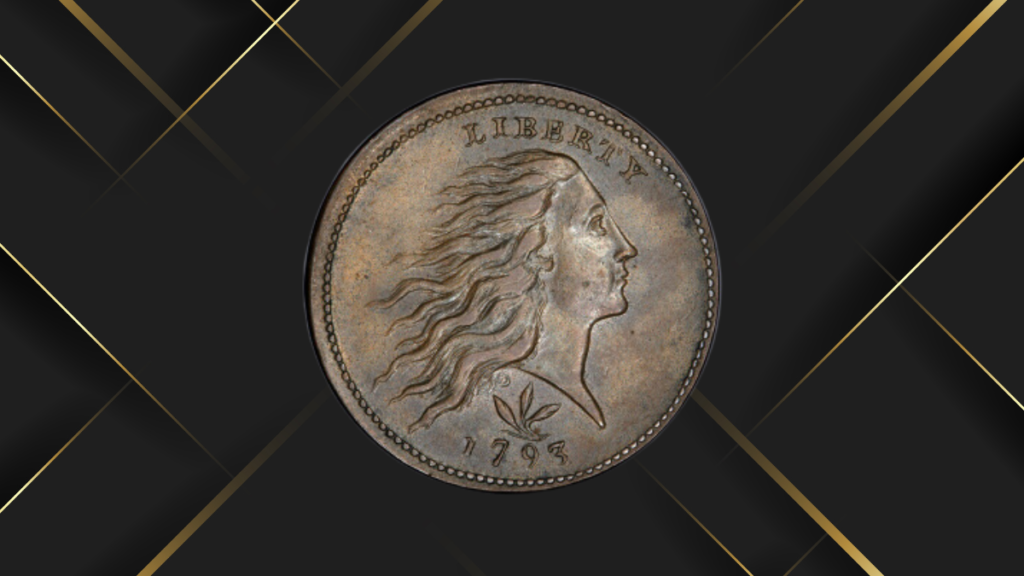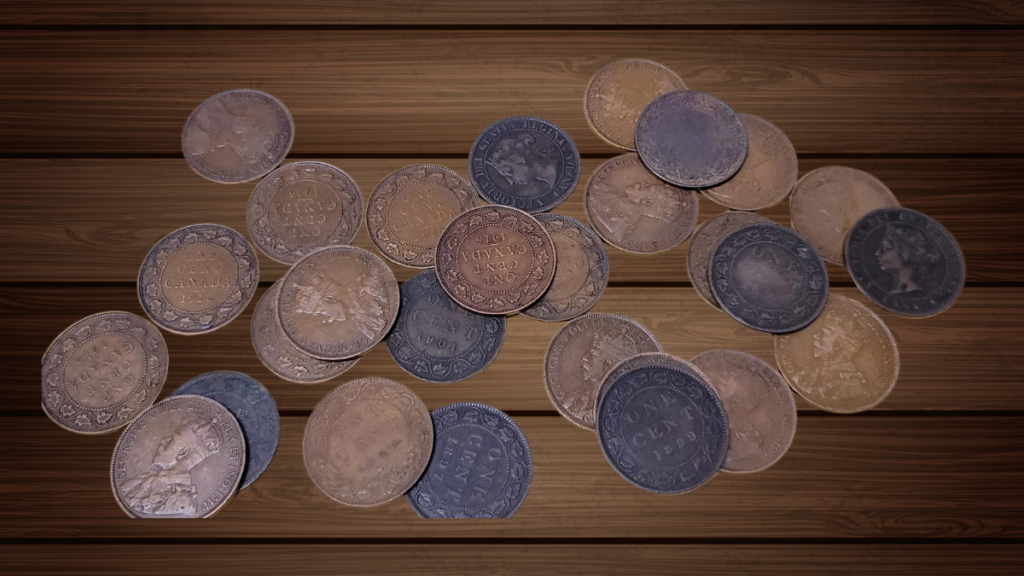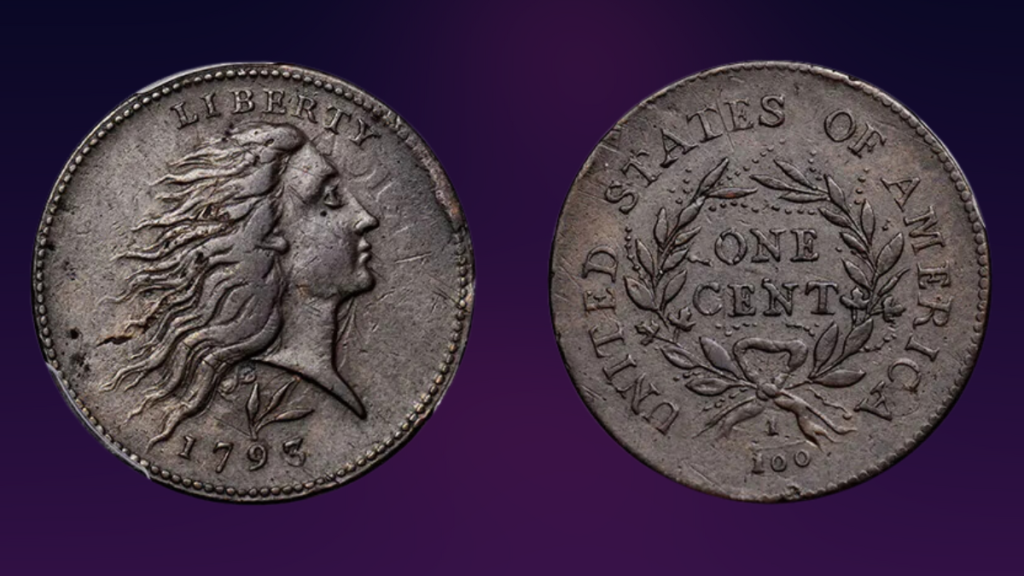The 1793 Wreath Cent is one of the earliest coins produced by the United States Mint. It holds a special place in American coin collecting due to its rarity and the fascinating history behind its design.
This coin, minted in Philadelphia during the first year of the U.S. Mint’s operations, is the second of three one-cent designs released that year.
But what makes the 1793 Wreath Cent so unique? Let’s dive into its history, production, and current value to understand why collectors are so intrigued by this small yet significant piece of American history.
Why Was the Wreath Cent Created?

The Wreath Cent came about as a response to public complaints about the initial design of the U.S. one-cent coin, known as the “Chain Cent.”
The reverse of the Chain Cent featured a chain link design that some people found offensive, as it reminded them of slavery and bondage. In reaction to these concerns, Mint Director David Rittenhouse ordered a new design.
The job of creating this new design fell to Henry Voigt, who was likely the designer of both the Chain and Wreath Cents.
The obverse (front) of the Wreath Cent was based on the same design as the Chain Cent but with slight adjustments, while the reverse (back) was completely changed to feature a decorative wreath. This new design was better received by the public.
How 6 Rare Coins From the 1800s Could Bring You a Fortune!
Production of the Wreath Cent
The Wreath Cent entered production on April 4, 1793, and was minted until April 19, when the Mint ran out of copper.
This shortage was not new, as the same issue had occurred during the production of the Chain Cent earlier that year.
However, by June 27, the Mint had secured enough copper to resume coinage, producing more Wreath Cents through July 1, with a few additional pieces being struck later in July.
By the end of the year, the Mint had produced around 63,353 Wreath Cents in total. Production halted again in September, not because of copper shortages this time, but due to a yellow fever outbreak in Philadelphia.
Tragically, the disease claimed the lives of Chief Engraver Joseph Wright and his wife, which further delayed operations at the Mint.
Surviving Examples: How Many Wreath Cents Are Left?

The 1793 Wreath Cent is considered one of the rare coins, and only a few thousand examples are believed to have survived. Most of the coins that still exist today are in poor condition, having been heavily circulated during the late 18th and early 19th centuries.
Some high-quality coins were likely saved by early collectors or traders who appreciated their value. When the U.S. Mint stopped producing large cents in 1857, interest in collecting early American copper coins surged.
Many collectors, both in the U.S. and abroad, sought out Wreath Cents, adding them to their collections. Today, most of the finest surviving examples of the 1793 Wreath Cent can be traced back to collections from the 19th century, making their history almost as valuable as the coins themselves.
A Wreath Cent That Traveled to Space
In a fun twist of history, one 1793 Wreath Cent even made it into outer space! In 1965, during the Gemini VII space mission, a Wreath Cent was placed inside a medical kit aboard the spacecraft. This unique story only adds to the coin’s already impressive legacy, making it one of the few coins to have left Earth’s atmosphere.
8 Rare Coins You Might Have Without Knowing Their True Value
The Value of a 1793 Wreath Cent
Because of its rarity and historical importance, the 1793 Wreath Cent is highly sought after by collectors. The value of these coins can vary greatly depending on their condition.
For example, a well-worn Wreath Cent can fetch around $2,000 at auction, while a higher-grade example might sell for anywhere between $5,000 and $50,000. Uncirculated examples are exceptionally rare, with the finest ones selling for over $1,000,000 in some cases.
However, collectors should be careful when purchasing these valuable coins. It’s essential to have the coin authenticated and graded by a professional service, such as the CAC, NGC, or PCGS, to ensure its authenticity and proper valuation.
Famous 1793 Wreath Cents in History

Several well-known examples of the 1793 Wreath Cent have made headlines in the coin-collecting world. Some of these coins have changed hands numerous times over the years, with each new owner adding to their provenance. Here are a few notable examples:
- Sheldon-5 Variety: This specific Wreath Cent, which has been sold multiple times over the centuries, reached a final auction price of over $1,000,000.
- Sheldon-6 Variety: A particularly fine example of this variety, graded MS67, was sold for over $300,000 at a recent auction.
- Sheldon-8 Variety: This rare coin fetched more than $40,000 in a 2008 auction and continues to be a prized item for serious collectors.
Each of these coins has its own fascinating history, often being passed from one important collection to another. This chain of ownership, or “pedigree,” adds to the coin’s appeal for collectors who value not just the coin itself, but its historical journey.
Is Your Loose Change Hiding a $80,000 Secret? Check This Coin Now!
Final Thoughts
The 1793 Wreath Cent is more than just a rare coin; it’s a piece of American history that tells the story of the early days of the U.S. Mint.
From its controversial beginnings as a replacement for the Chain Cent to its status as a valuable collector’s item today, the Wreath Cent continues to captivate numismatists around the world.
For those interested in owning a piece of this history, it’s important to work with trusted experts and to carefully research the coin’s background before making a purchase.
Whether you’re a seasoned collector or a new enthusiast, the 1793 Wreath Cent is a rare treasure that offers both historical significance and financial value.

